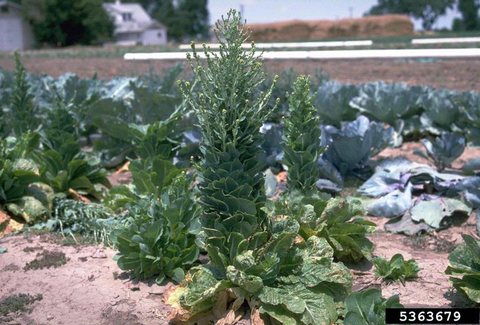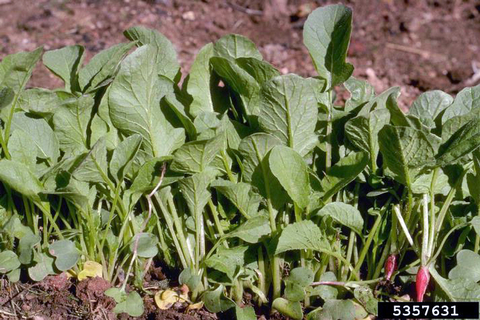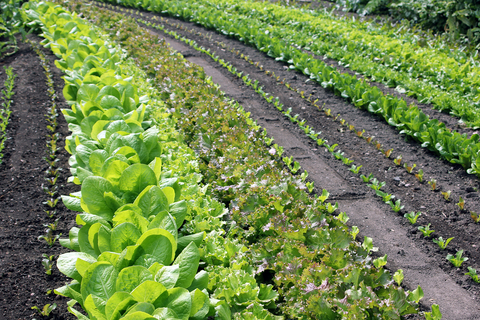By March, gardeners are eager to start planting cool-season spring vegetables. There are some common problems with cool-season veggies in Minnesota including bolting, lack of head formation, and bitterness in Brassicas, lettuce and spinach. We'll look at how to navigate them.
Bolting and other problems
Brassicas, lettuce, and spinach all come from the Mediterranean region and surrounding areas, where winters are quite mild by Minnesota standards. They are biennial and winter annual crops, meaning that in their native habitat, they must go through a winter cooling period called vernalization, before they can complete their life cycles and produce flowers.
In Minnesota, our spring weather is a lot like winter in the Mediterranean. As such, growing cool-season crops is a bit of a dance to obtain the right conditions for our vegetables.
The ideal situation:
- Growing conditions remain cool but moderate (50s and 60s) for the first month of growth. It’s warm enough that the plants are able to grow and put on plenty of leaves, and not quite cold enough to cause vernalization until the plants have accumulated substantial leafy biomass.
- Once the plant has grown sufficiently large and experienced enough cold, it can shift into its reproductive phase.
- For head or root forming vegetables like broccoli or radishes, they can begin to form their heads and roots at this phase.
- Ideally, this reproductive phase lasts a while so that the plants can develop large heads and roots before flowering.
Deviations from these weather conditions can cause some of the following issues.
Bolting
Bolting refers to premature flowering. It occurs at any point after a plant has shifted into its reproductive stage. After this shift, high heat will speed up flowering.
Once a plant flowers, the heads are no longer marketable, and the taste of the foliage often becomes bitter. This is especially true for spinach and lettuce, which both become extremely bitter after flowering.
Failure to form a head or root structure
Sometimes you’ll find large, beautiful green cabbages in your garden that just never form heads, or radishes that seem to be thriving, but when you pull them up the roots are tiny and have not formed a bulb.
This can happen when you plant a bit too late into the spring and your plants never experience enough cold weather to vernalize. (Not to be mistaken with plants intentionally planted around midsummer, which then experience their cool temperatures in the fall).
This failure to form a head can also be a result of too much nitrogen, which can cause similar issues in peppers, certain cucurbits and other vegetables.
Failure to form an enlarged root could also happen as a result of not enough space.
Bitterness
Bitterness is most problematic in spinach and lettuce and is caused by a variety of factors. Primarily, heat and water stress can cause plants to become bitter, as can age.
Solutions to common problems with spring-planted cool-season vegetables
Succession planting
Succession planting is simply the practice of spacing out your planting dates. Rather than planting all of your broccoli on April 1, with succession planting you might transplant some of it on March 23, some on April 1, some on April 8, and so on.
Succession planting is great for a few reasons:
- You can spread out your harvest dates so that you can enjoy produce from the garden for an extended period of time.
- It helps to minimize risks during uncertain spring weather. If one succession experiences the right conditions to trigger bolting or buttoning up, the next might not.
Variety selection
Not all radishes are the same. Some have been intentionally selected for cold tolerance, whereas others have been intentionally selected for heat tolerance or resistance to bolting. The same is true with all vegetables.
Make sure you’re selecting varieties that meet your goals. Most cool-season crops will be marketed according to the best season for planting. Some will explicitly be labeled as spring, fall, or heat tolerant (i.e. summer) varieties. Seed catalogs will provide a chart showing the best varieties for different times of the year.
For later spring plantings, choose a heat-tolerant variety to avoid bolting.
Transplanting
Some gardeners like to direct seed their cool-season crops. This is absolutely acceptable, and a great option for folks who lack space indoors for starting seeds.
But for spring crops, transplanting can help provide a few weeks of optimal growing temperatures indoors. This means your plants are likely to mature a bit earlier before the really warm summer weather comes.
There are also some side benefits. For example, transplanted Brassicas are better able to withstand feeding damage from early spring insect pests like flea beetles and cabbage maggots than direct-seeded crops.
Find out more about common insects in vegetable crops.
Row cover and low tunnels
For the eager gardeners who love to get out in the garden as soon as possible, season extension tools like row cover and low tunnels can help to create a warmer growing environment for early planted vegetables.
Find out more about extending the growing season.
Reduce heat stress
Bolting and bitterness can both result from excess heat. A couple of strategies to reduce heat stress as summer begins include watering regularly to keep the soil moist and using organic mulches like straw, which keep the soil cool.




